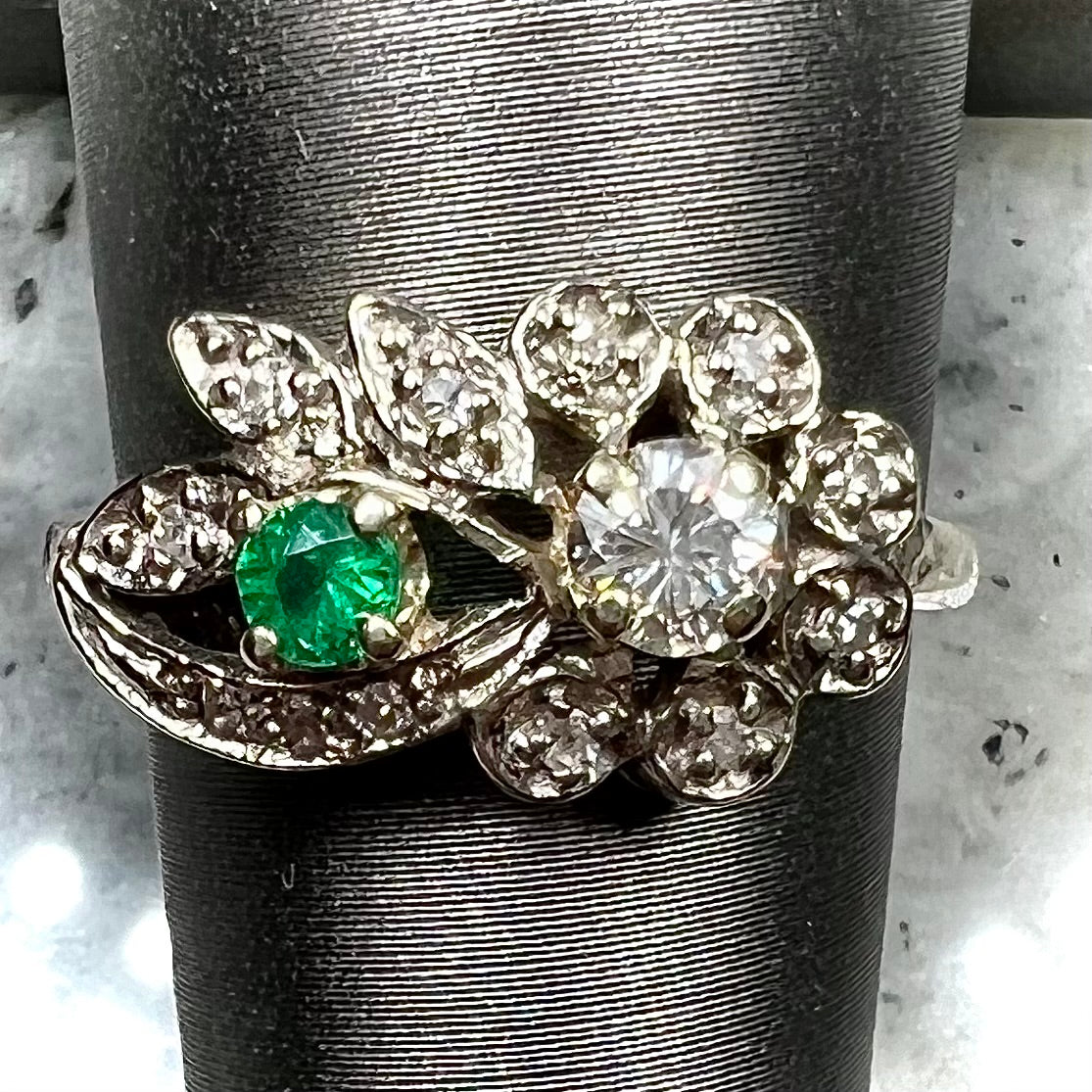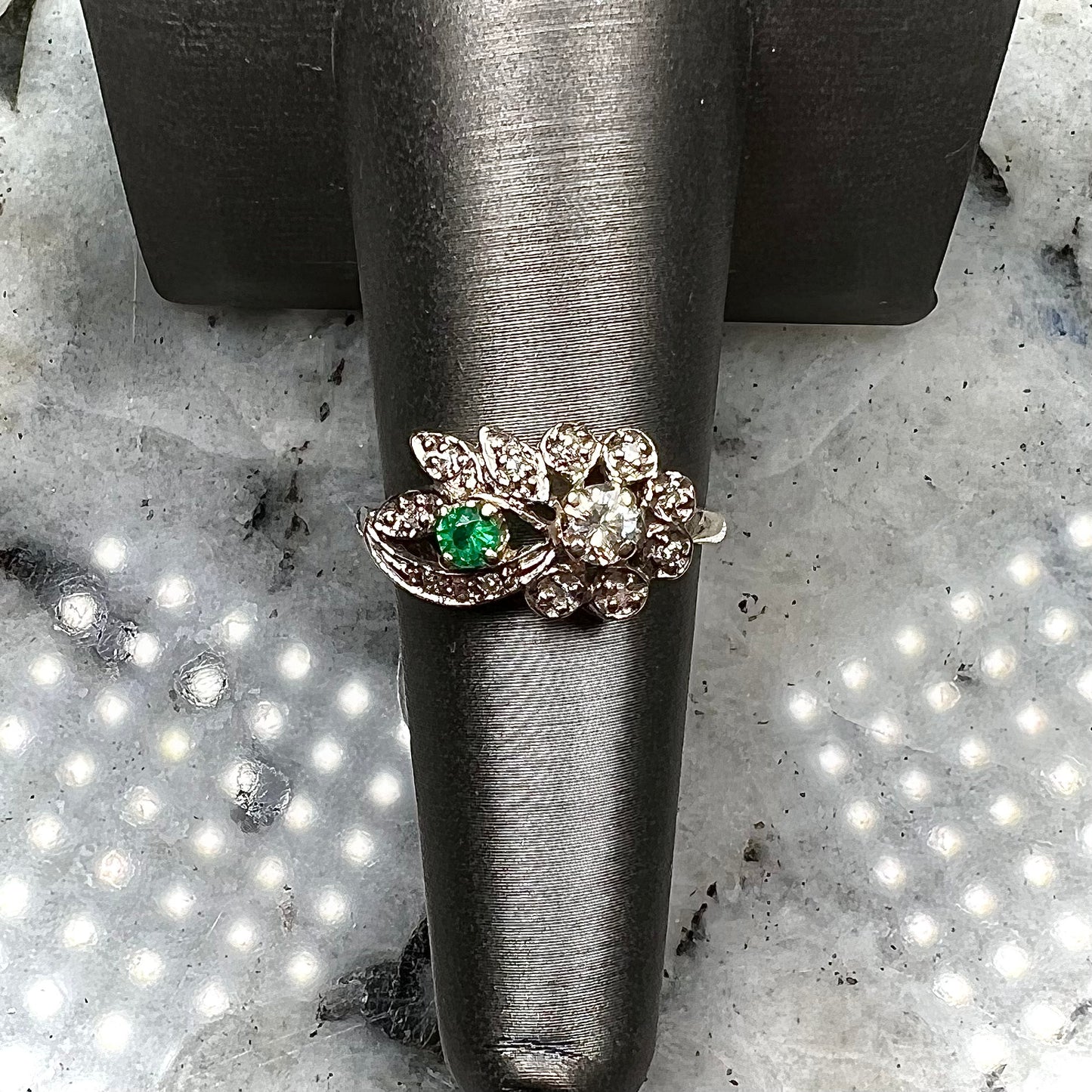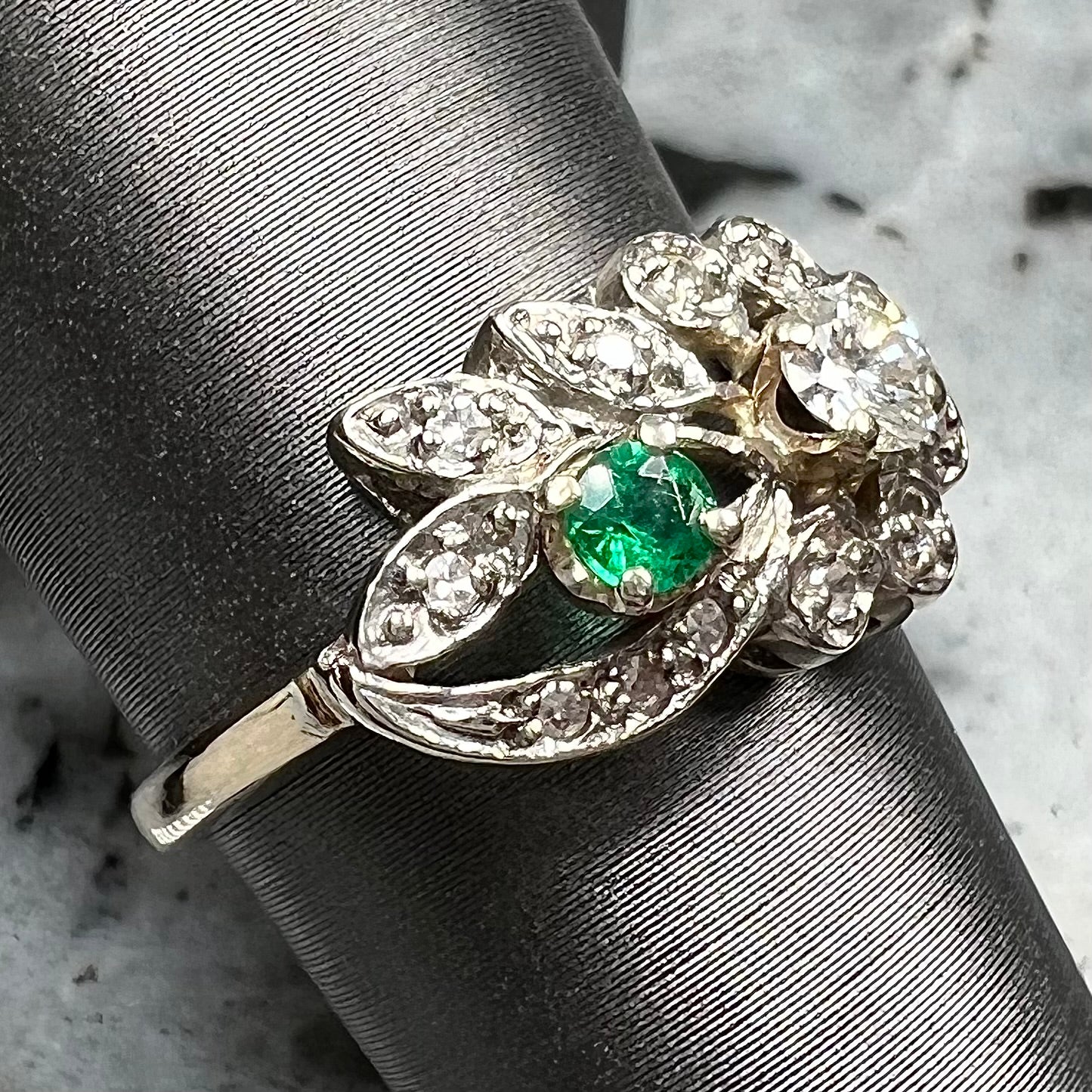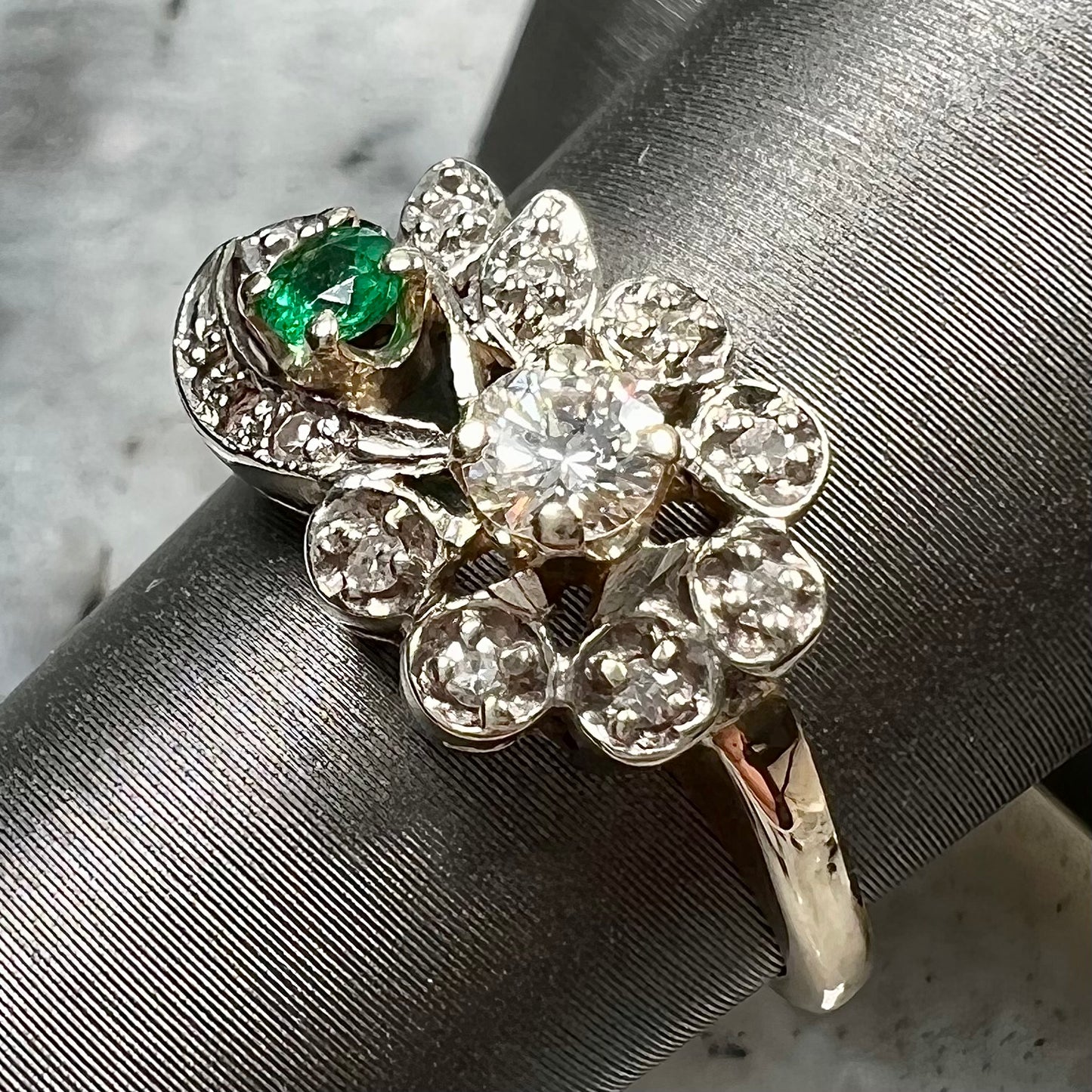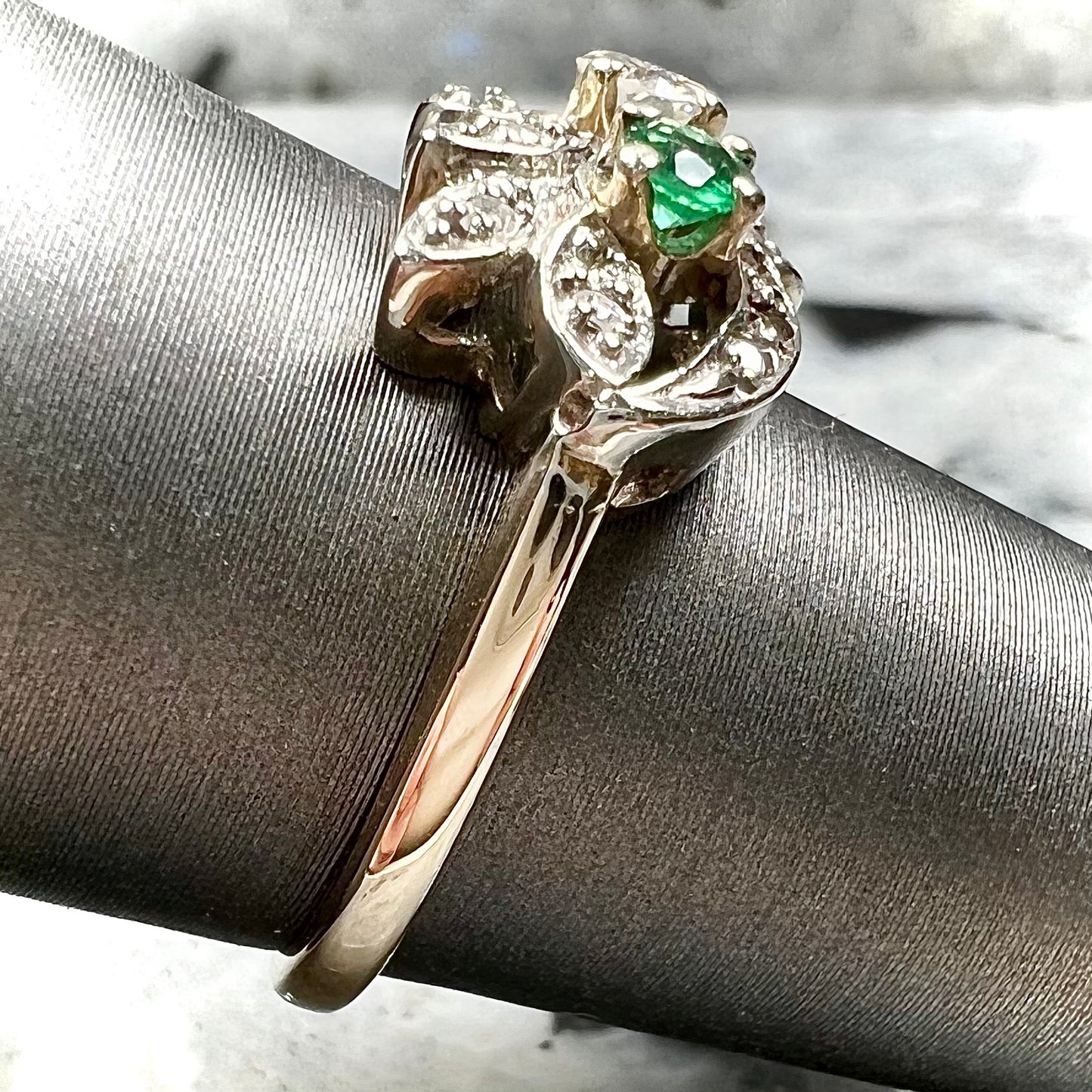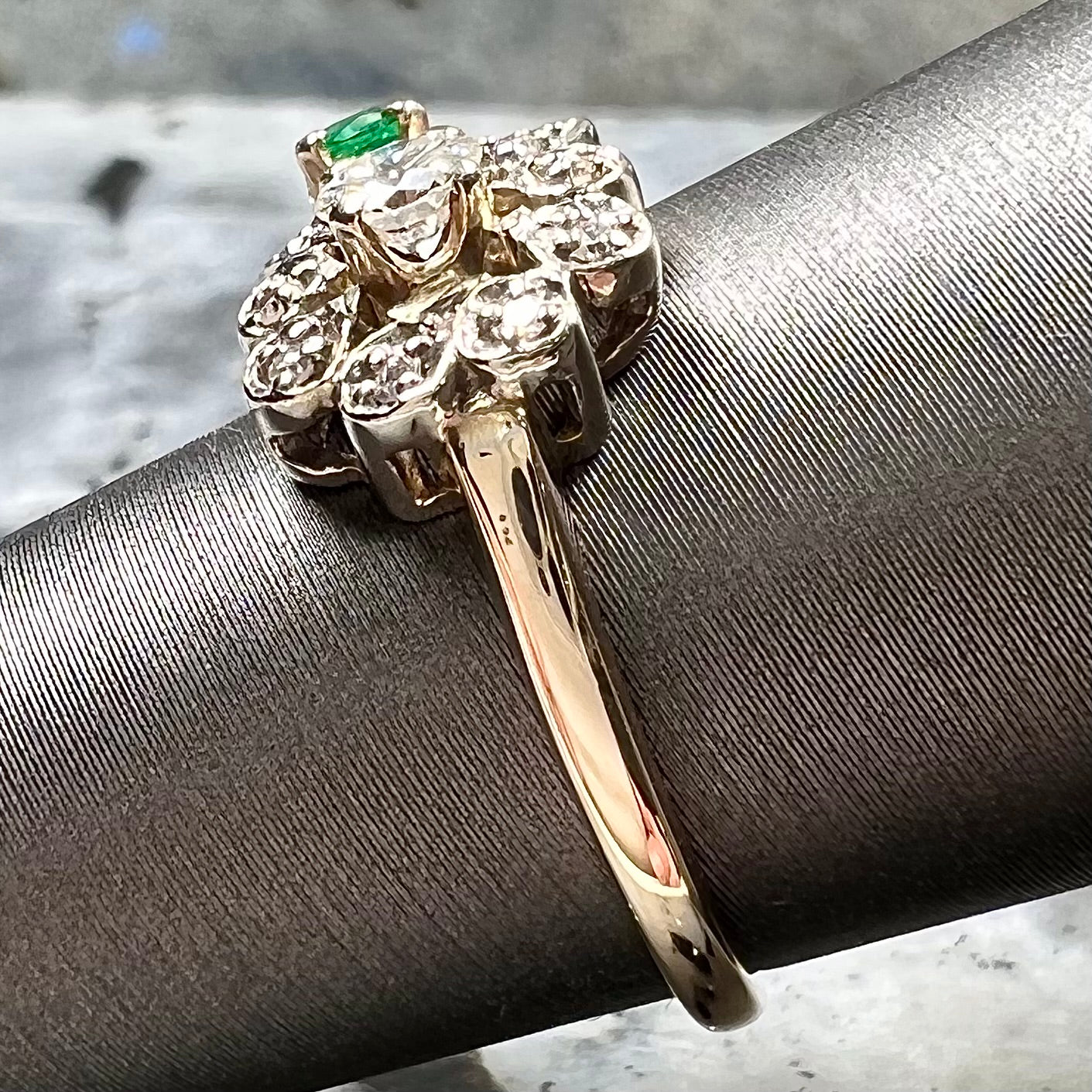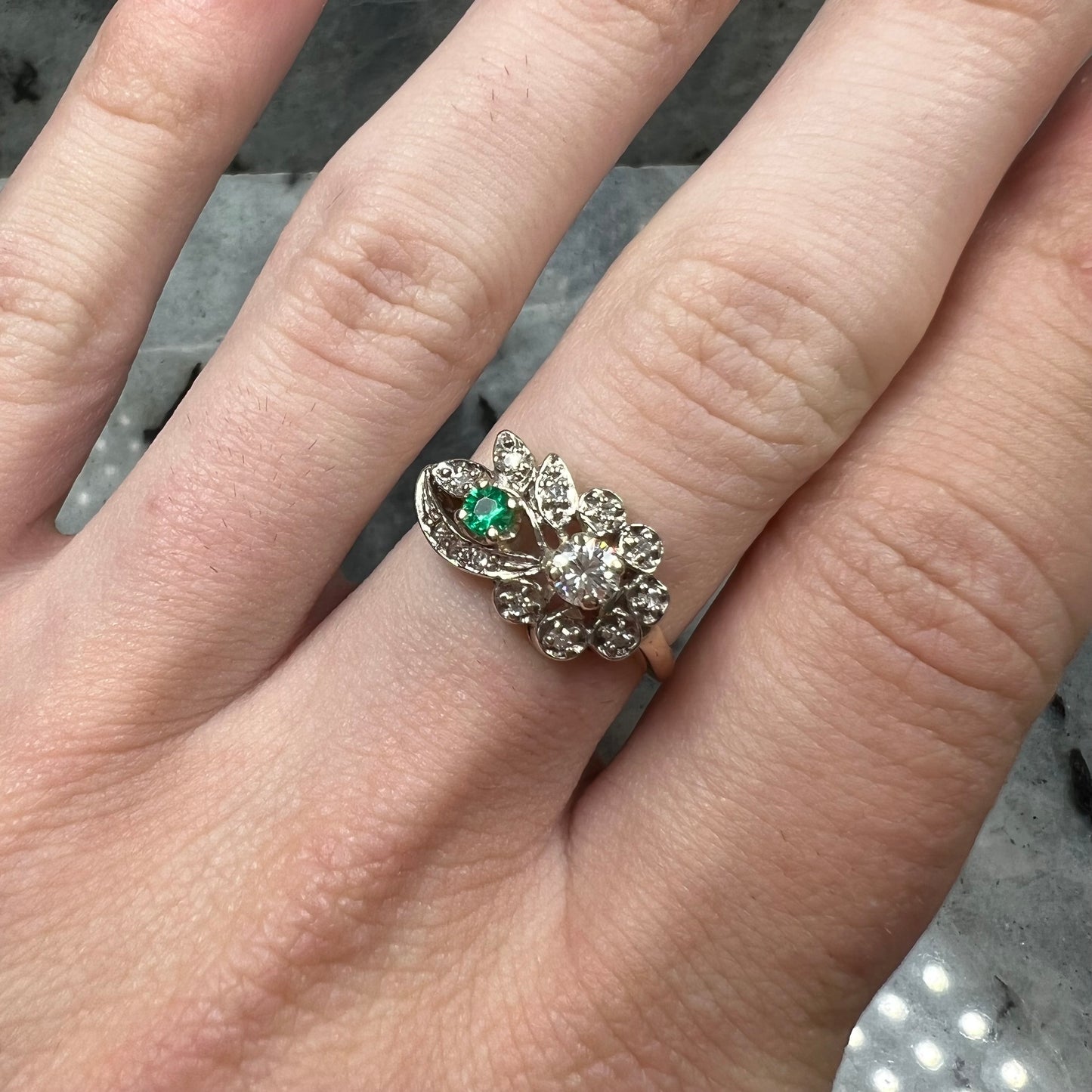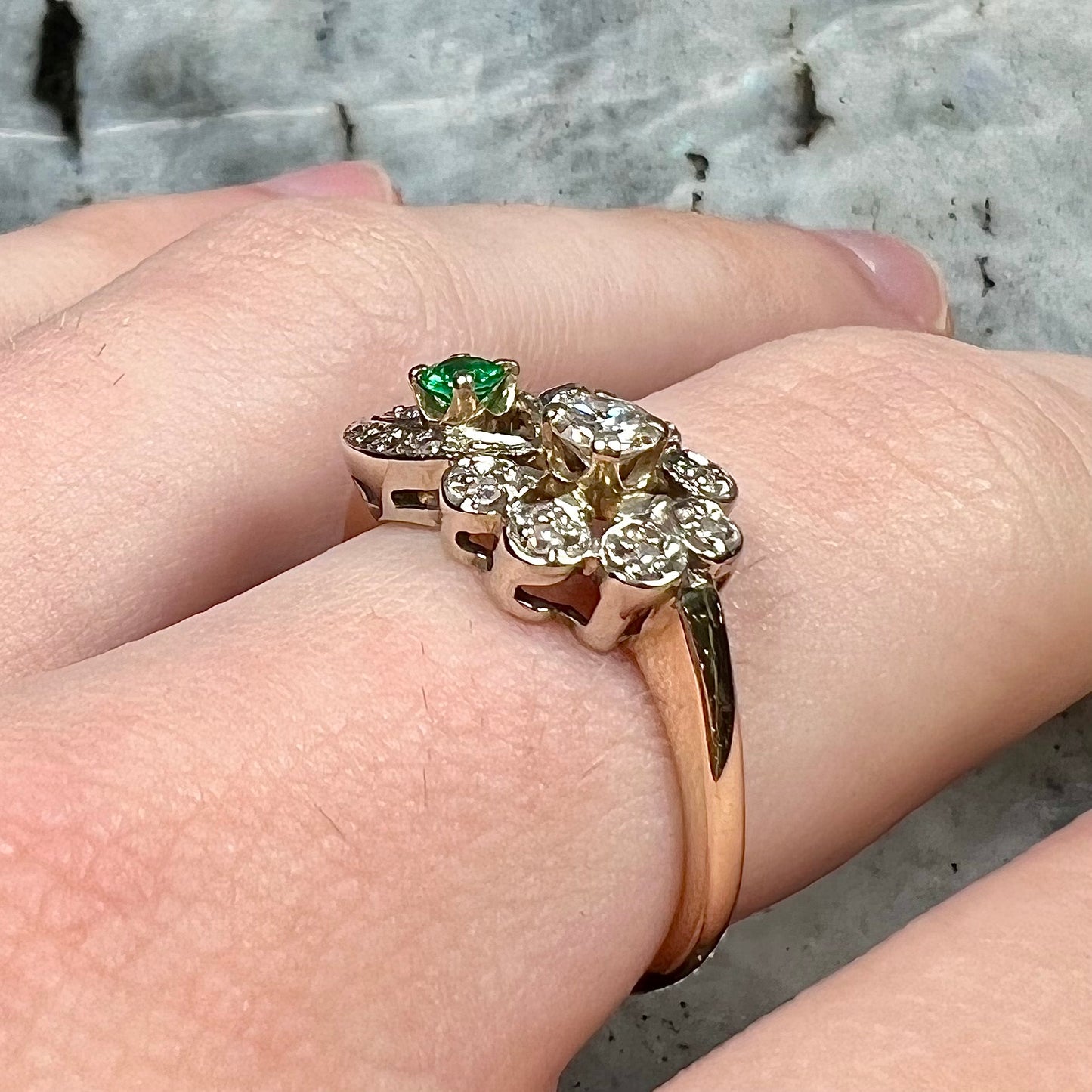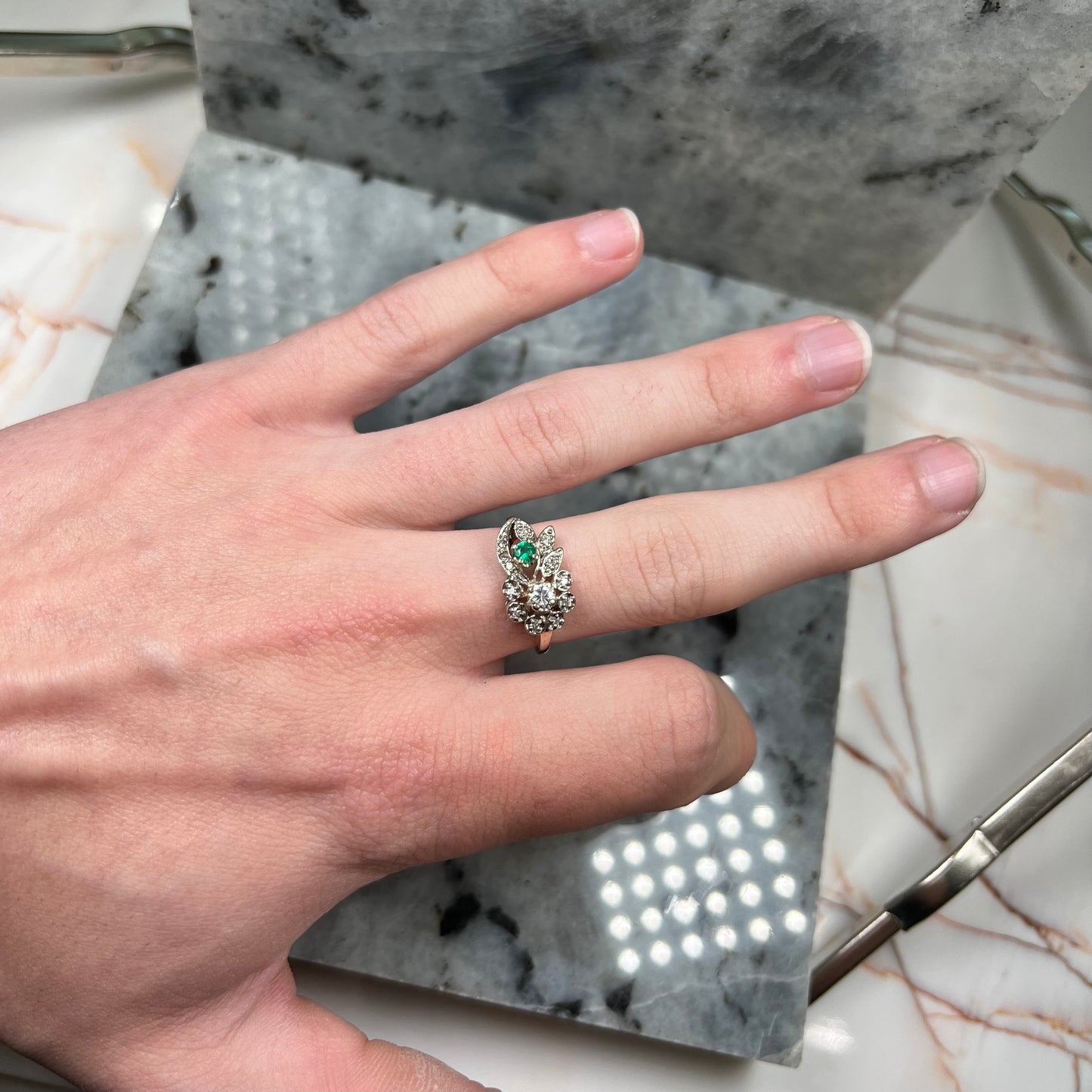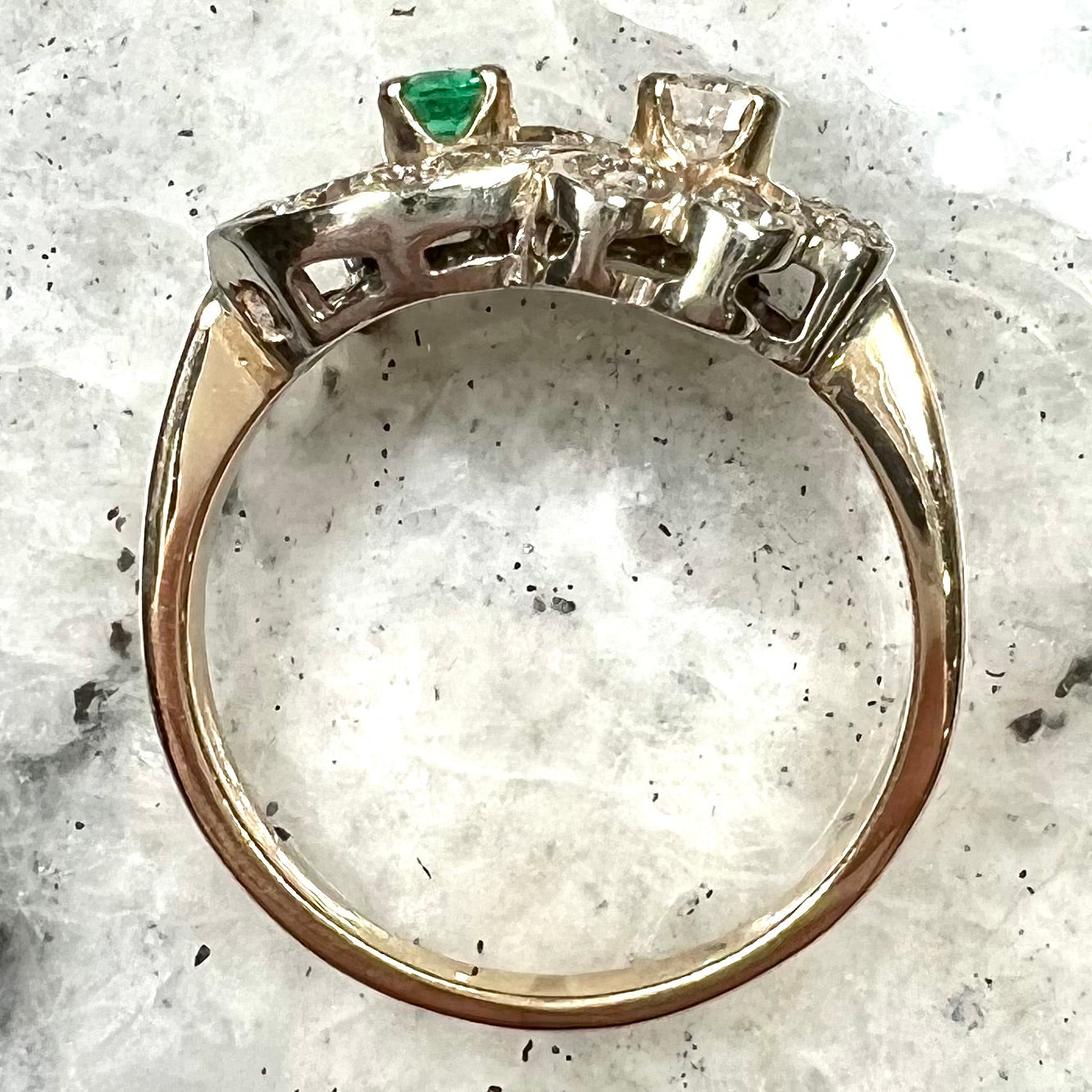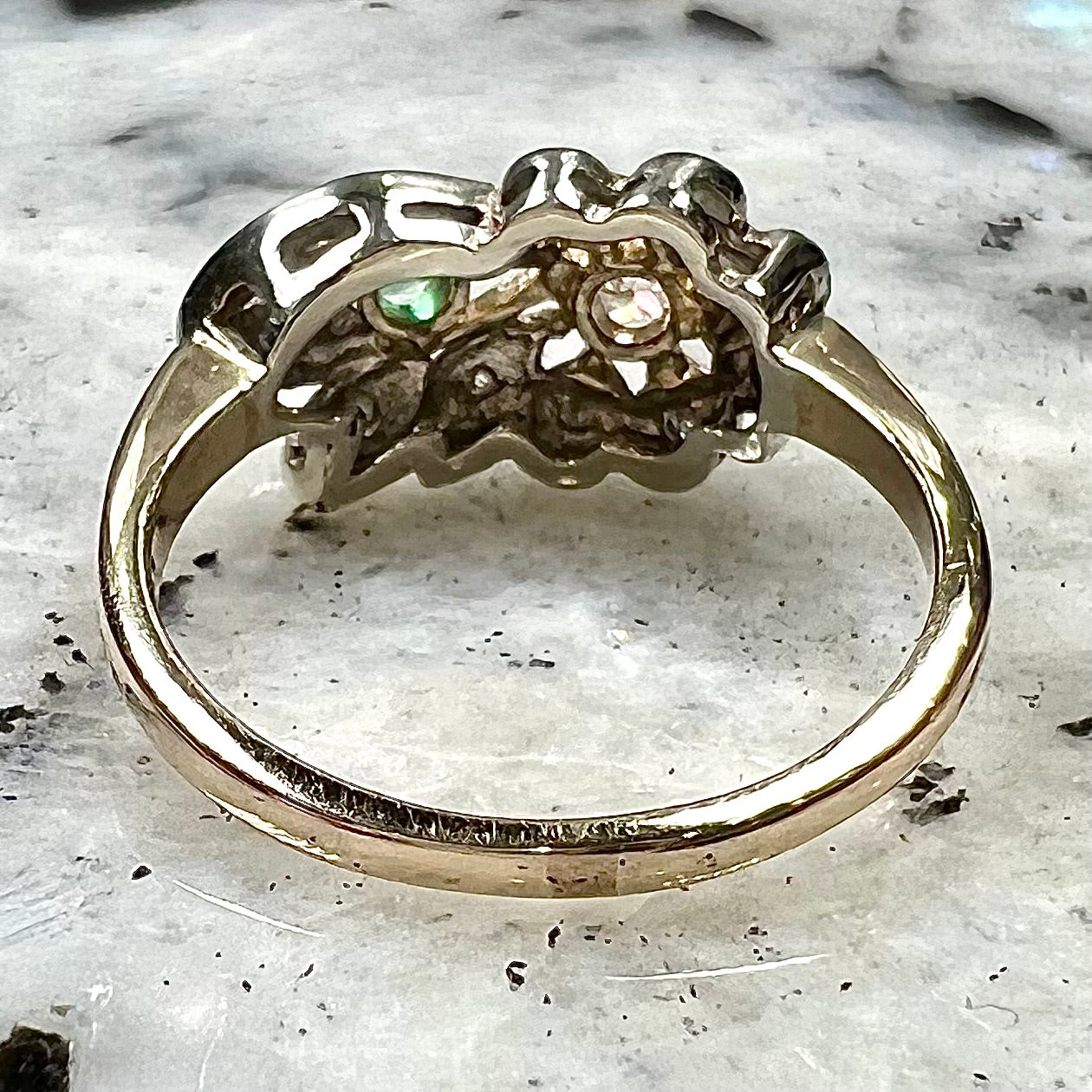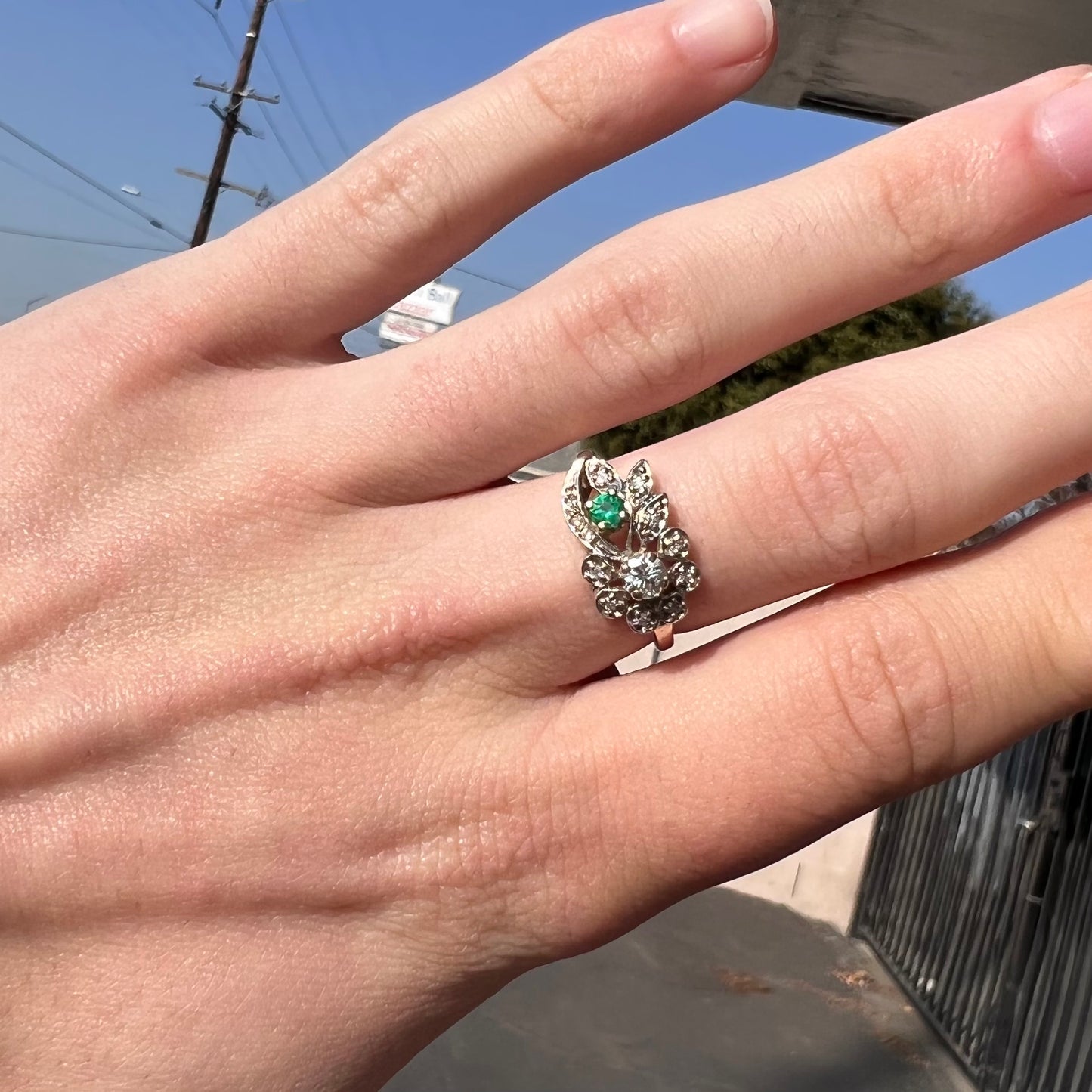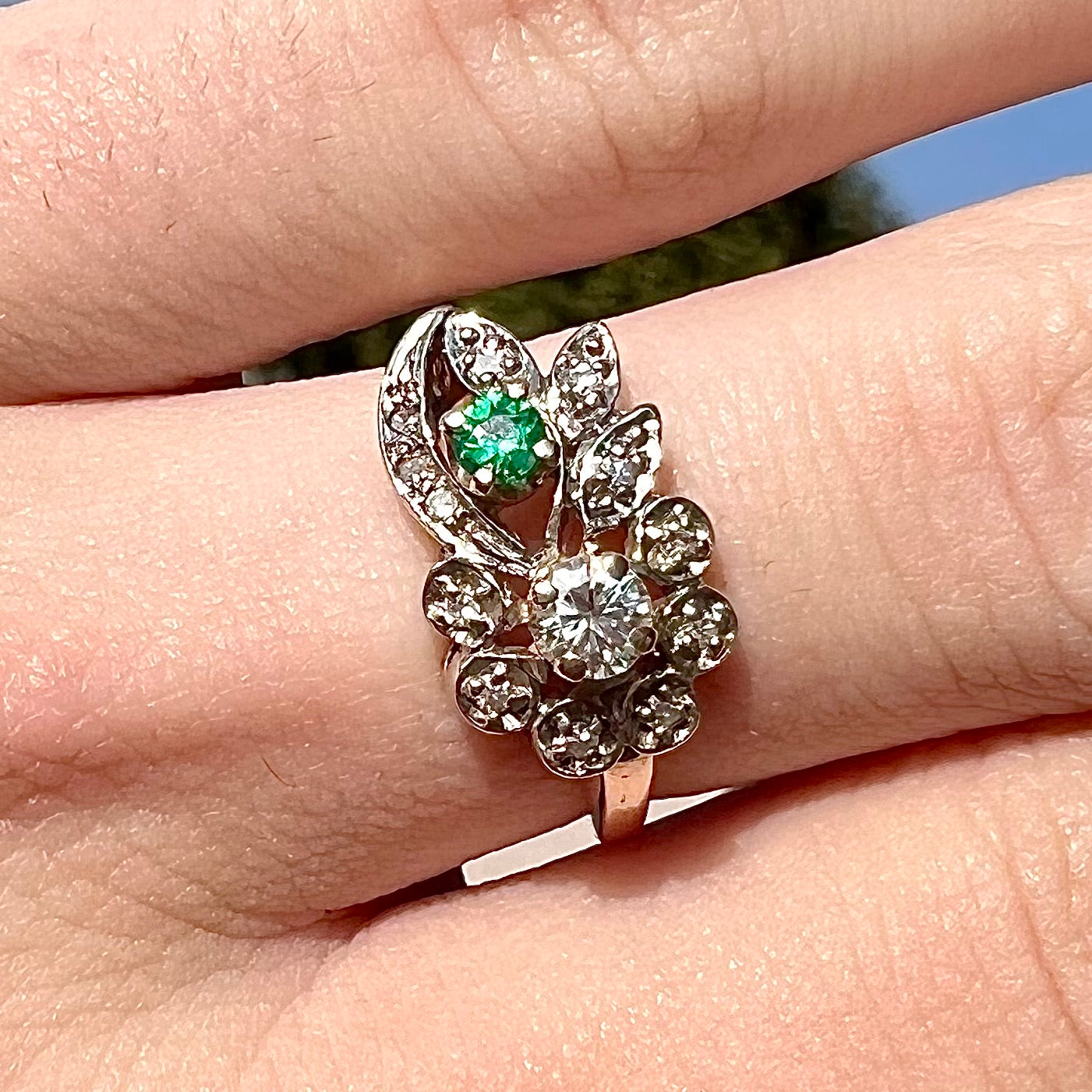Burton's Gems and Opals
Diamond & Emerald Mother's Ring | 14kt | Vintage c.1960's
Diamond & Emerald Mother's Ring | 14kt | Vintage c.1960's
Couldn't load pickup availability
A Bit About The Piece:
Vintage mother's ring featuring the birthstones for the months of April and May.
Details, details...
The Center Stones: Diamond and Emerald
- approximate diamond carat weight: 0.25ct
- diamond clarity: SI1
- diamond color: H-I
- diamond cut: Standard Round Brilliant Cut
- emerald diameter: 3mm
- emerald cut: Standard Round Brilliant Cut
The Side Stones: Diamond
- single cuts
- approximate total carat weight: 0.10ct
The Setting: Two Tone Cast Prong Set Ring
- 14kt yellow gold shank, solid
- 14kt white gold top, solid
- default size: 7.00
- circa 1960's
About Emerald:
Emerald is a gem quality green "beryl," the same family of stones as blue aquamarine and pink morganite. It is estimated that Colombia produces 70-90% of emeralds on the world market, though in addition, extra-fine grade stones are known to come from Zambia and Brazil. Inclusions are common and expected to be seen in emerald; it is widely accepted practice for gem cutters to conceal inclusions by soaking stones in cedarwood or grapeseed oil. Most stones available on the market have been treated this way.
Though emerald is a hard, scratch resistant 7.5 to 8 on the Mohs hardness scale, we strongly advise to wear emerald rings with care. Stones can be brittle and subject to chipping or breaking on sharp impact. Do not clean emerald jewelry in an ultrasonic cleaning machine or with a steam cleaner. Clean with mild soap, water, and a soft bristled toothbrush. Avoid soaking emerald for long periods of time to preserve any assumed oil treatments in the stone. Should these treatments be compromised, most jewelers can fix them.
About Diamond
While the first known diamond engagement ring was given in 1477, diamond engagement rings did not become a staple of American culture until 1947 when British diamond corporation, De Beers Group, launched their famous marketing campaign, "A diamond is forever." This hit success soon caught the world by storm, and the jewelry industry changed forever; not only were diamonds meant just for royalty, but for every young couple looking to marry.
When diamond shopping, you often hear of what's referred to as "the 4 C's": color, cut, clarity, and carat weight.
- Color grades start with "D" being the best, a colorless white that makes a clean piece of white paper appear dirty. This scale goes all the way down to "Z" where undesirable body color is very easily noticed (typically yellow or brown). Stones with body color saturation beyond Z begin to pick up a new value on a new scale and are referred to as "fancy colors" (e.g. "canary yellow," "chocolate," "Argyle pink").
- Cut not only means shape, but proportions, polish, and symmetry. The cut is most responsible for how much light is returned to the viewer's eye, and its importance cannot be overlooked when considering the investment of a sizable stone.
- Clarity grades begin with I2 and I1 at the bottom, respectively. This indicates inclusions can be seen with the naked eye. SI2 and SI1 are the next rank up, where inclusions cannot be seen with the naked eye but are easily seen under 10x magnification. VS2 and 1 stones have inclusions difficult for a trained expert to spot under 10x magnification, with VVS2 and 1 being more difficult yet. Finally, the best of the best, IF (internally flawless) and FL (flawless) rank as the very highest clarity grades.
- Carat Weight directly correlates to a stone's size, though not always. While one stone might have a higher carat weight, another might appear larger. This phenomenon is due entirely to how the stone is cut. Many retail customers prefer a deeper stone with a higher carat weight at the cost of beauty. Prices are known to jump noticeably every 0.25 carats and dramatically every 1.00 carat. Five carats is equal to one gram.
Diamond ranks 10 on the Mohs hardness scale and is the hardest known natural substance. It cannot be scratched, except for by another diamond. This does not mean that diamond is not indestructible however; diamond can easily be chipped or broken. It is important to avoid any careless, sharp blows to your diamond jewelry. Diamonds highly chemical resistant and can very safely be cleaned with chemical jewelry cleaner.














